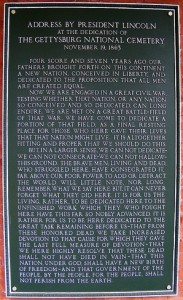
. . . for the people.
Public benefit (or one of many closely related concepts) is becoming an increasingly important element in rating grant applications and in assessing the value of arts organizations to their communities. As I discovered in my recent work on a grant review panel for Cuyahoga Arts and Culture, there needs to be much more discussion of and, eventually, agreement about what this means.
This is far too big a topic to be addressed in one or even several blog posts. But there are a couple of thoughts that might be helpful in the conversations that must be forthcoming. One is coming to understand what we mean by “public.” As I have said earlier, this does not need to mean everybody. There are precious few things in life that positively affect everyone. However, if for no reason other than practicality, it needs to mean more than the relatively narrow range of stakeholders (and those much like them who have not yet “found” the art) who are already supporters.
The public benefit rubric is intended, I believe, to do at least three things. One is to justify the allocation of public funds where public funds are involved. Another is to position the arts to be seen as more direct contributors to community well-being. (This can support the first or lay the groundwork for future public and private funding.) A third is to push arts organizations out of their comfort zones with respect to the populations they attempt to serve. Going beyond the usual suspects (successfully) demands different ways of thinking and new ways of relating to the community.
So, rightly or not, when I look for public benefit in a project, I want to see whether there is sincere effort being expended in attempting to understand and provide meaningful opportunities to people (especially whole categories of people) who, for whatever reason, have not benefited from the arts organization’s work in the past.
I realize as I write this that what I am looking for is an expansion of public benefit in ways that meet needs among new “targets” rather than simply expanding the reach within an existing demographic. That makes sense to me in the context of the three intentions I mentioned above, but I don’t remember having seen it articulated that way before.
Another thought I’ve had that strikes me as significant is framed in the following question: If the public does not know it is benefiting, is it? Benefit of which the public is unaware certainly does not help with funds justification or being seen as contributing. It is also probably not possible if going beyond comfort zones is really being done. (Or at least being done well.) Additionally, I suspect that any benefit identified of which the subset of the public being “served” is unaware, is not really a benefit to them. It is more likely some form of self-justification on the part of the arts organization.The “because we exist” benefit has never been particularly compelling.
So, be beneficial. Engage!
Doug
Gettysburg Address Photo: ![]()
![]() Some rights reserved by crazysanman.history
Some rights reserved by crazysanman.history

[…] OKArtsCouncil Want to write a better #arts grant? […]